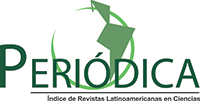Attention in contraception offered for PSF team in São Gonçalo do Amarante - CE
DOI:
https://doi.org/10.5216/ree.v12i4.5870Keywords:
Family planning, Contraception, Family Health ProgramAbstract
doi: 10.5216/ree.v12i4.5870Knowing the user's profile of Family Planning (PF) in the Family Health Program (FHP) and the contraception's attention that is dispensed has fundamental importance for developing appropriate strategies to the needs of the population. The objectives was to know the social-economic, gynecological and obstetric profile in users of PF service; to identify the Contraceptive Methods (MAC) used by the clientele and complaints related during the use of these; and to analyze the regularity of the accompaniment of these users. Retrospective, documentary, quantitative study realized in 2008, occurred in São Gonçalo do Amarante-CE. Had been revised 171 handbooks of all the users of the PF service of two micron-areas of the Family health program's team Croata II, chosen in a random way. Between 171 (100%) handbooks revised, 158 (92,4%), were women. The MAC more used before and after the attention received in PF were the low-dose oral hormonal contraceptives (OHC) and the condom. Displacement was the most common complaint between DIU users; and menstrual alterations between users of injectable. About the attendance dynamics, were verified users without return and users with unnecessary comings to the service, demanding the necessity of reorganization in the accompaniment of the program users.
Descriptors: Family planning, Contraception, Family Health Program.Downloads
Downloads
Published
Issue
Section
License
Copyright (c) 2010 Revista Eletrônica de Enfermagem

This work is licensed under a Creative Commons Attribution 4.0 International License.














